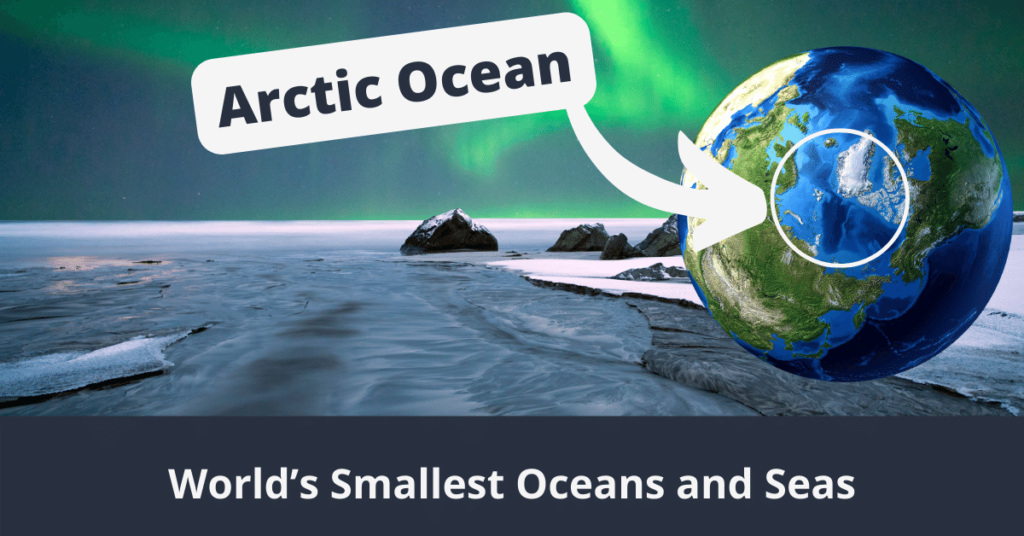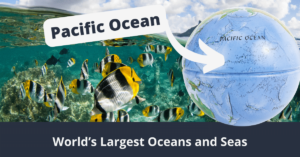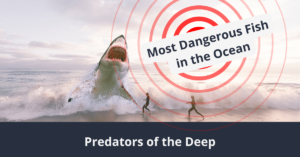While the largest ocean covers one-third of the planet’s surface, the smallest oceans and seas don’t have such an impressive resume. However, they are important for resources, trade, recreation, and the economy.
It might surprise you to know that the world’s smallest ocean is still 1.4 times the size of the US. Many seas are much smaller than that, and we’ll let you know which ones below.
Everything you will learn here
- The Worlds’ Smallest Oceans by Area
- 1. Arctic Ocean – The smallest ocean in the world (by area)
- 2. Southern Ocean: – The 2nd smallest ocean in the world (by area)
- 3. Indian Ocean: – The 3rd smallest ocean in the world (by area)
- 4. Atlantic Ocean: – The 4th smallest ocean in the world (by area)
- 5. Pacific Ocean: – The 5th smallest ocean in the world (by area)
- The Worlds’ Smallest Oceans by Volume
- The Worlds’ smallest oceans by coastline
- Top 9 Worlds’ Smallest Seas
- Other Small Oceans and Seas Worthy of Mention
- The shallowest oceans, sorted by average depth
The Worlds’ Smallest Oceans by Area
| Rank | Ocean | Area in Square Miles |
| 1 | Arctic Ocean | 6.006.974 |
| 2 | Southern Ocean | 8.478.798 |
| 3 | Indian Ocean | 27.243.351 |
| 4 | Atlantic Ocean | 32.870.015 |
| 5 | Pacific Ocean | 65.144.274 |
1. Arctic Ocean – The smallest ocean in the world (by area)
Area: 6.0 million square miles. (1,4 x the USA)
The Arctic Ocean is the smallest and shallowest of the world’s oceans, covering an area of about 6 million square miles. It is located in the northernmost part of the Earth, surrounding the North Pole. The Arctic Ocean is mostly covered by ice, with a small area of open water in the summer months.
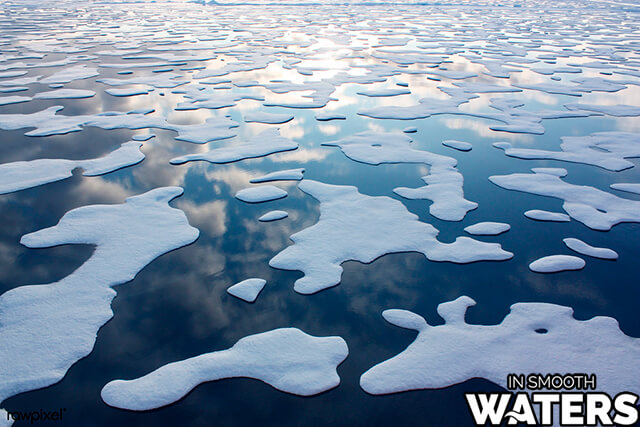
The Arctic Ocean is the world’s smallest ocean by volume and area. However, the worlds’ smallest ocean by coastline is the Southern Ocean (antarctic ocean), which touches less land. Its waters are usually covered with ice, but unique and plentiful animal life flourishes beneath the cold surface.
The Arctic Ocean covers about 6.0 million square miles. It is the only ocean that is smaller than Russia. Perhaps because it is the smallest ocean and lies in one of the coldest areas of the world, the Arctic Ocean is warming faster than any other ocean or sea in the world. It could become ice-free within the next 100 years.
However, the area is threatened by the development of natural resources such as oil, overfishing, mining, and shipping. Although the Arctic Ocean is the smallest in the world, it would have a big impact if all of its ice melted.
Weather patterns around the world would change. The more than 400,000 indigenous people who live in the Arctic would have to relocate as their shorelines eroded. Sea ice reflects sunlight and helps reduce the planet’s temperature. If the ice melts in this smallest ocean, global warming could intensify.
2. Southern Ocean: – The 2nd smallest ocean in the world (by area)
Area: 8,4 million square miles. (2,2 x the USA)
The Southern Ocean is the second-smallest ocean, covering an area of about 8.4 million square miles. It is located around Antarctica and is the fourth-largest ocean in the world. The Southern Ocean is known for its rough seas and strong winds, and is home to a diverse array of marine life. It is also known as the antarctic ocean.
3. Indian Ocean: – The 3rd smallest ocean in the world (by area)
Area: 27 million square miles. (7,1 x the USA)
The Indian Ocean is the third-smallest ocean, covering an area of about 27 million square miles. It is located between Africa, Asia, and Australia and is the third-largest ocean in the world. The Indian Ocean is known for its warm waters and diverse marine life, including coral reefs, whales, and dolphins.
Area: 32 million square miles. (8,4 x the USA)
4. Atlantic Ocean: – The 4th smallest ocean in the world (by area)
The Atlantic Ocean is the second-largest ocean, covering an area of about 32 million square miles. It is located between the Americas, Africa, and Europe and is the second-largest ocean in the world. The Atlantic Ocean is known for its diverse marine life, including whales, dolphins, and coral reefs, and its many islands.
Area: 65 million square miles. (17,1 x the USA)
5. Pacific Ocean: – The 5th smallest ocean in the world (by area)
The Pacific Ocean is the 5th smallest (the largest!) and deepest of the world’s oceans, covering an area of about 65 million square miles. It is located between the Americas, Asia, and Australia and is the largest ocean in the world. The Pacific Ocean is known for its diverse marine life, including coral reefs, whales, and dolphins, and its many islands.
The Worlds’ Smallest Oceans by Volume
The Worlds’ Smallest Oceans by Volume are still the Arctic Ocean, Southern Ocean and the Indian Ocean. The 3 smallest ocean of the world are the smallest oceans by volume and by area.
However, there is a notable difference in the ranking of the ocean by volume, with the 4th and 5th smallest oceans. Their order changes.
The largest ocean by volume is the Atlantic, whereas the Pacific is the largest Ocean by Area.
This is because the Atlantic Ocean is much deeper on average as the Pacific Ocean. The average depth of the Atlantic Ocean is 11,900 feet (ca. 3,627 m), whereas the Pacific Ocean has an average depth of only 1300 feet (ca. 396 m). The deepness of the Atlantic overcompensates it’s smaller size. The Atlantic Ocean is half the area of the pacific, but is 10 x deeper on average. This makes the Atlantic the 5th smallest ocean (the largest!) by volume.
These are the respective volumes of the worlds’ oceans, starting with the smallest ocean by volume.
| Rank | Ocean | Volume in Cubic miles |
| 1 | Arctic Ocean | 4.498 |
| 2 | Southern Ocean | 17.226 |
| 3 | Indian Ocean | 63.337 |
| 4 | Pacific Ocean | 160.713 |
| 5 | Atlantic Ocean | 744.715 |
The Worlds’ smallest oceans by coastline
If you rank the oceans by coastline, the order changes.
The smallest oceans by coastline is the Southern Ocean, which is also known as the Antarctic Ocean. The Southern Ocean is the water body surrounding the Antarctica. It is the second-smallest of the world’s five oceans by volume and area. The Southern Ocean is also the least known ocean, as it is the most remote and least explored. Its small coastline is largely defined by ice, and it is the coldest, windiest, and driest of the world’s oceans.
This is the ranking of the Worlds’ smallest oceans by coastline:
| Rank | Ocean | Coastline (miles) |
| 1 | Southern Ocean | 11.165 |
| 2 | Arctic Ocean | 28.203 |
| 3 | Indian Ocean | 41.337 |
| 4 | Atlantic Ocean | 69.510 |
| 5 | Pacific Ocean | 84.297 |
Top 9 Worlds’ Smallest Seas
You might not recognize every name on this list, but here are some of the globe’s tiniest seas:
9. Alboran Sea
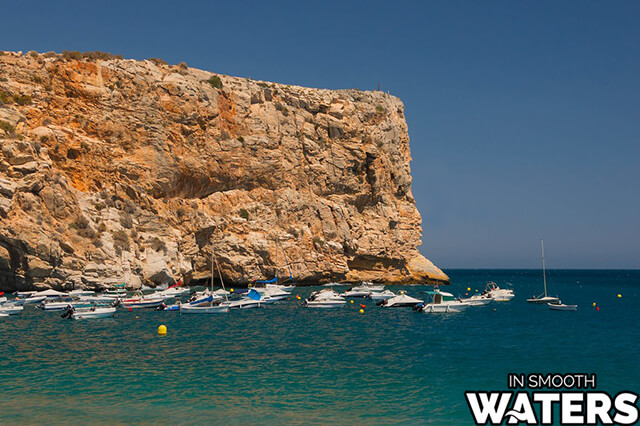
At just over 20,000 square miles, the Alboran Sea is quite small. This sea, which lies in the Western Mediterranean, falls between the Strait of Gibraltar and Africa. It is the transition zone between the Atlantic Ocean and the Mediterranean Sea.
Although the Alboran Sea’s coastline spans three countries, the Spanish have assumed control of the waterway’s coastline in Algeria and Morocco.
Some of the world’s smallest seas are the most special. The Alboran Sea is home to the greatest population of bottlenose dolphins and has the only harbor porpoises in the Mediterranean Sea. Large numbers of plankton provide oxygen for the marine animals that live here.
8. Adriatic Sea
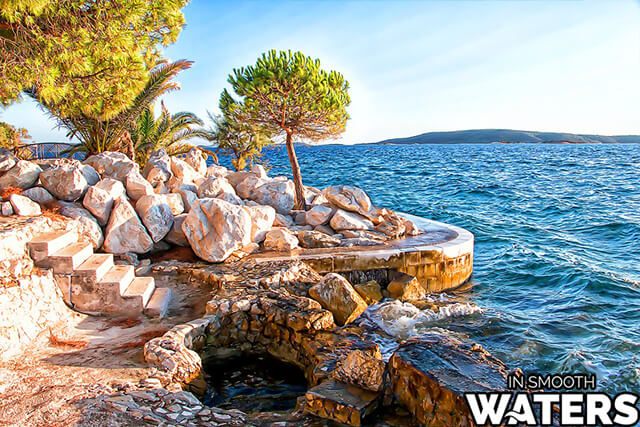
The Adriatic Sea covers about 53,500 square miles within the Mediterranean Sea. Its maximum depth is 4,035 feet (ca. 1,230 m).
Bordered by Italy and Croatia, the Adriatic Sea is dotted with many small islands and has some dangerous, fjord-like areas between them. However, the islands lie mostly along the Croatian coast. The Italian coastline is smooth and continuous.
The tides in the Adriatic are different from the tides in the Mediterranean. They have a range of about 3 feet, whereas the Mediterranean tidal range is closer to 1 foot. The tides in the Adriatic Sea also exhibit a different pattern than Mediterranean tides.
Because of its low nutrient content, the Adriatic Sea has limited biodiversity. Still, there is enough sea life to make the area a treasure for divers. The crystal-clear water is another reason that people are attracted to the Adriatic Sea.
7. Hudson Bay
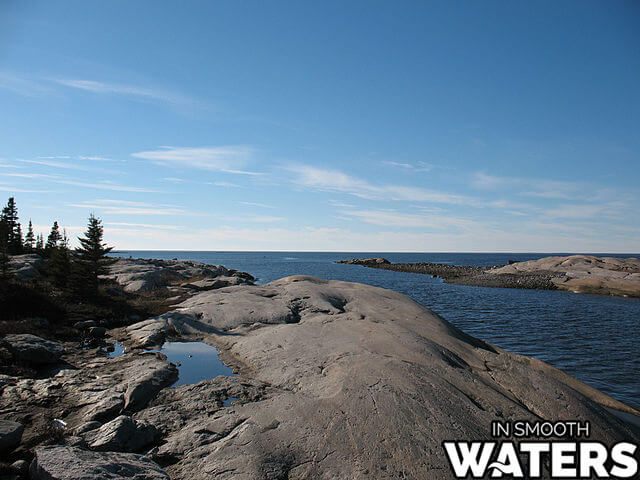
You may not know that the Hudson Bay is actually a marginal sea of the Atlantic Ocean. Combined with the Hudson Strait, the Hudson Bay creates an inland sea system where saltwater and freshwater mix.
The Hudson Bay covers about 474,000 square miles. Its deepest point is 890 feet. Even though it is one of the smallest seas, it is the world’s second-largest bay.
(You can read about the Largest Oceans and Seas)
The northern part of the bay has a polar climate. This is unusual for an area that lies below the 60 degrees north latitude line. The water usually freezes from mid-winter to early summer. But the length of time that the Hudson Bay spends frozen is shorter every year.
In the summers, about 50,000 beluga whales flock to the Hudson Bay. In the winter, polar bears hunt on the frozen ice. But not many people live along its coast.
Because the Hudson Bay is covered by ice for a large part of the year and receives a lot of runoff from the land, it has a low salinity level. The freezing point of the water is also higher than in many other oceans and seas.
6. Yellow Sea

The Yellow Sea gets its name from the sediment that flows into it from nearby rivers. The soil is rich with minerals that lend their color to the water. However, pollution from industrial and domestic runoff is turning the sea more brown than yellow.
The Yellow Sea is one of the shallowest in the world. Its average depth is between 120 and 240 feet. The sea is 146,719 square miles in area. Although the Yellow Sea contains saltwater, its salinity is fairly low. The salinity drops even further during monsoon season.
This area is the most important region for the millions of birds that migrate through the East Asian-Australasian Flyway every year. Approximately 600 million people live in the Yellow Sea’s catchment area.
5. Baltic Sea
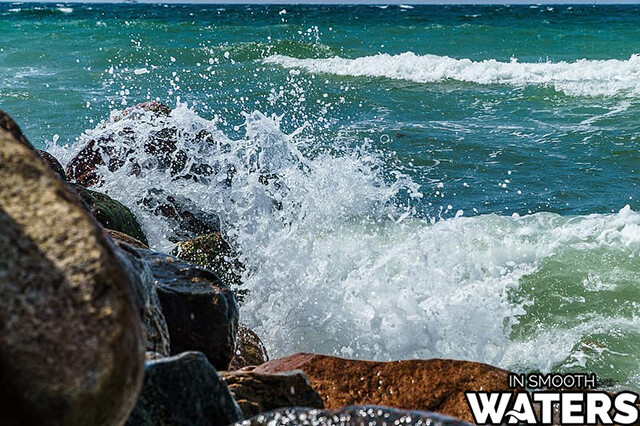
The Baltic Sea covers an area of about 151,000 square miles. Its coastline runs for about 5,000 miles. At the deepest point, the bottom of the sea is 180 feet below sea level. This is a relatively shallow sea that developed when the ice sheets retreated about 10,000 to 15,000 years ago.
The Baltic Sea naturally connects to the Atlantic Ocean via the Danish Straits. It also connects to the White Sea via a man-made canal.
The Baltic Sea lies along the northern coast of Europe. It has a cold climate and has frozen 20 times, the most recent being in 1987. About half of its surface area is usually frozen in the winter.
In addition to being one of the smallest seas, the Baltic is the youngest. It is also the largest brackish water sea in the world. The sea is contained by land and receives a great deal of runoff from the surrounding areas. Therefore, it has a unique environment.
In the Middle Ages, the Baltic Sea was an essential trade route. However, fishing and trading are less significant in the area than they once were.
4. Persian Gulf
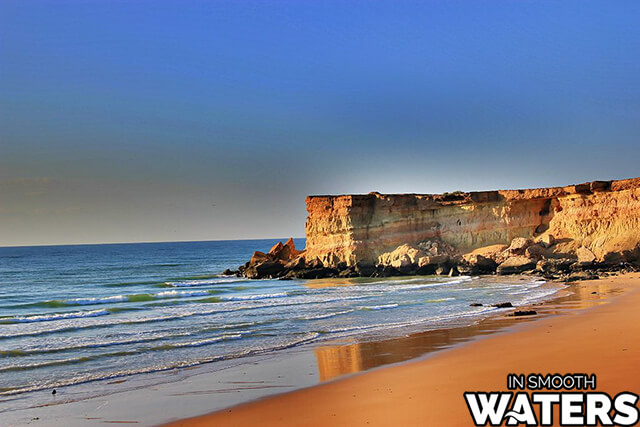
You might not realize that the Persian Gulf is a sea. It is considered a marginal sea of the Indian Ocean. The gulf spans an area of about 93,000 square miles between Iran and the Arabian Peninsula. Its narrowest area is only 35 miles wide, and it is only 300 feet (ca. 91 m) deep. The Persian Gulf is fairly young compared to other oceans and seas. It formed only about 15,000 years ago.
The ecology of the Persian Gulf was once strong. However, industrialization and oil spills have damaged the environment. Artificial islands that lie in the sea, which draw tourism, have also harmed the mangrove forests, which provide homes and food for much of the area’s wildlife.
One of the most notable creatures found in the Persian Gulf is the dugong dugan. This sea cow is a relative of the manatee and the only herbivorous sea mammal.
3. Sea of Cortez
Area: 62,000 square miles. (1,6 % of the USA)
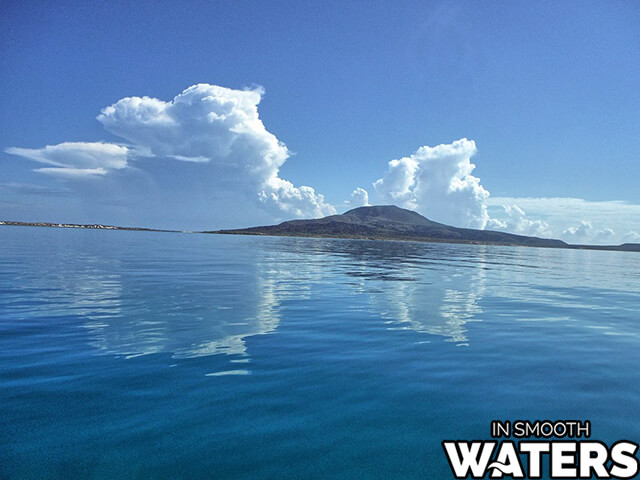
Many people call the Sea of Cortez the Gulf of California. This body of water falls between Mexico and the Baja peninsula.
The marine life in the Sea of Cortez is plentiful. Even though the sea covers only 62,000 square miles, it offers legendary snorkeling and scuba diving. Jacques Cousteau once called the Sea of Cortez “nature’s aquarium” for its impressive sprinkling of wildlife. The Sea of Cortez is home to whale sharks, orcas, leatherback sea turtles, and blue whales.
More than 9,000 islands sit in the Sea of Cortez, providing nesting spots for birds. This is an ideal destination for seeing some nature while you bask in the mild climate. Not to mention, 70 percent of Mexico’s commercial fish come from the Sea of Cortez, and the area is home to more than 900 fish species.
2. Sea of Marmara
Area: 4,380 square miles. (0,11 % of the USA)
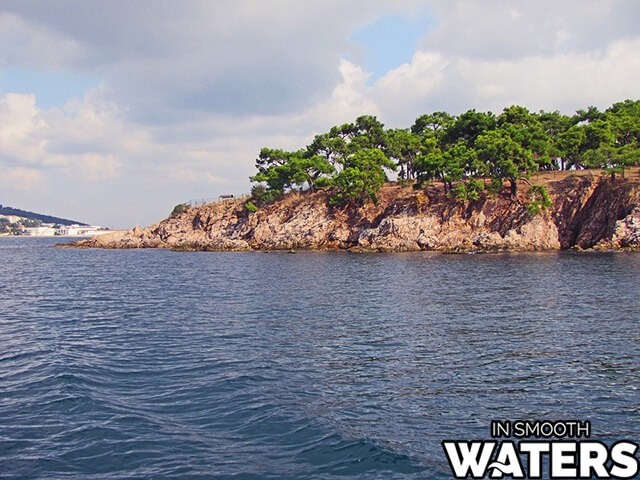
Although experts dispute which sea is actually the smallest, most agree that the Sea of Marmara is the one. Covering only about 4,380 square miles, this sea is in Turkey. It connects the Aegean and Black Seas and has many gulfs along its coastline.
This sea gets its name from Marmara Island, a word which comes from the Greek word for marble. Marmara Island is rich in marble. Some of the other islands that lie in this sea are Avsa, Imrali, Prince Islands, Pasalimani, and Ekinlik Islands.
1. Ross Sea
Area: 0,246 million square miles. (0,06 % of the USA)
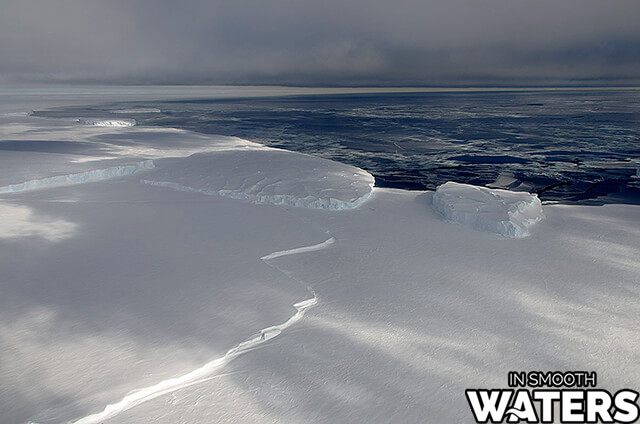
If you’re looking for an untouched, pristine body of water, look no further than the Ross Sea. You’ll have to travel quite a distance to get here, though. The sea lies in Antarctica, in the Southern Ocean.
The Ross Sea features one of the largest ice shelves in the world. The 200-foot-tall ice cliffs look impressive, and they extend even farther below the surface of the water.
Adélie penguin colonies have lived in the Ross Sea for millions of years. The birds lay eggs on the small, rocky areas that aren’t covered by ice.
Other Small Oceans and Seas Worthy of Mention
- Gulf of Alaska: 591,900 square miles
- Andaman Sea: 307,994 square miles
- Solomon Sea: 277,994 square miles
- Visayan Sea: 3,861 square miles
These may be the world’s smallest oceans and seas, but each one is noteworthy for some reason. All the world’s bodies of water are important, and many of these smaller oceans and seas have ecological, financial, or environmental significance.
The shallowest oceans, sorted by average depth
| Rank | Ocean | Avg. depth (m) | Avg. depth (feet) |
| 1 | Southern Ocean | 327 | 1.073 |
| 2 | Pacific Ocean | 397 | 1.302 |
| 3 | Arctic Ocean | 1.205 | 3.953 |
| 4 | Atlantic Ocean | 3.646 | 11.962 |
| 5 | Indian Ocean | 3.741 | 12.274 |
This list is based on average depth, rather than maximum depth. The deepest point in the world’s oceans is the Challenger Deep, which is located in the Mariana Trench in the western Pacific Ocean and has a depth of about 36,037 feet (ca. 10,984 m).

